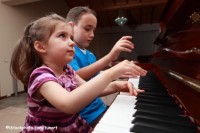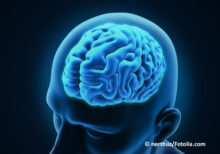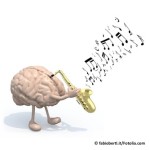It’s been a long time since my last post and this one is a continuation, so if you’re new to this blog, or if you don’t remember the previous post about the importance of learning a musical instrument for developing executive function skills, you may want to re-read it before continuing here.
 Briefly, the three key areas of executive function are inhibition (being able to control attention, behavior, and emotions); working memory (important for critical thinking and reasoning); and cognitive flexibility (seeing things from different perspectives – thinking “outside the box”). Reasoning, problem solving and planning are all built on these three key areas of executive function.
Briefly, the three key areas of executive function are inhibition (being able to control attention, behavior, and emotions); working memory (important for critical thinking and reasoning); and cognitive flexibility (seeing things from different perspectives – thinking “outside the box”). Reasoning, problem solving and planning are all built on these three key areas of executive function.
And adults and children who have studied music have been shown to have stronger executive function skills. Which brought us to the question at the end of the previous post: did these children and adults gravitate towards studying music because they already had stronger EF skills, or did studying music promote those skills? Another researcher may have the answer.
Let’s back up several years to 2001. Between 2001 and 2007, the National Institutes of Health conducted a Pediatric MRI Study in which they looked at the brains of 554 healthy, normal children from various parts of the country. (Also called the NIH MRI Study). There were two age groups: newborns to 4 years, 5 months; and 4 years, 6 months to 18 years. According to the website, “the overarching goal of the Pediatric MRI Study is to foster a better understanding of normal brain maturation as a basis for understanding atypical brain development associated with a variety of disorders and diseases.”
The researchers at the NIH scanned the brains of these children at two-year intervals using Magnetic Resonance Imaging (MRI), MR Spectroscopy (MRS), and Diffusion Tensor Imaging (DTI). They also did physical neurological exams, checked various hormone levels, did psychiatric interviews, conducted various tests such as verbal fluency, Wechsler Digit span, achievement tests, and IQ tests. They also used behavioral rating scales for executive function, temperament, behavior, and parenting stress. This project collected a massive amount of data which is now available to researchers.
James Hudziak, professor of psychiatry at the University of Vermont and director of the Vermont Center for Children, Youth, and Families, is one researcher who has taken advantage of the data to look at the relationships between the development of the cortex and behavior in children.

The cortex is the wrinkly outer layer of the brain that is primarily responsible for higher brain functions such as consciousness, language, perception, reasoning, learning, memory, and coordination of motor and sensory information.
The cortex changes in thickness as a child develops. As new neural connections are made, the cortex thickens, and then some pruning occurs as the connections become more efficient and the cortex thins. The rate of thinning and thickening is indicative of development of cortical organization – or to put it another way, it shows the developing maturity of the brain.
Hudziak and his colleagues had previously found that the thickening and thinning of the cortex in certain areas of the brain were related to anxiety and depression, lack of attention, and behavior control issues in children.
In this study, Hudziak wanted to see if there was a relationship between cortical organization and the study of music. Of the 554 children in the NIH MRI database, information on musical training was available for 232 of them. Hudziak and his colleagues correlated the musical training information with brain scans of those 232 children to see if there was a relationship between musical training and cortical development.
And they found, as one would expect in individuals who have studied music, that the cortex changed in thickness in areas related to fine motor skills and auditory areas. But Hudziak was more intrigued with the finding that playing a musical instrument correlated with changes in the behavior-regulating areas of the brain – the areas relating to executive function: attention control, emotional control, working memory, inhibitory control, and organization and planning.
In the previous post looking at the study of Dr. Nadine Gaab, Gaab cautioned that hers was not a longitudinal study in which children were analyzed both before and after musical training. But Hudziak’s study shows that, over a six year period in which children were studying music, the brain areas related to executive function actually did change in size. Studying a musical instrument accelerates cortical organization in brain areas having to do with emotional and behavioral growth. This study was one of the largest to look at the effects of studying an instrument on brain development.
In an earlier post, New year, new musical beginnings, I wrote about a study that showed that infants between the ages of 6 and 12 months who were in interactive music classes with their parents showed better communication skills, smiled more, and showed lower levels of distress. Hudziak’s study didn’t look at children younger than six because there probably weren’t enough of them studying an instrument. But it’s clear that studying music has positive emotional and behavioral advantages, whether for a 6-month-old or for a teenager.
Unfortunately, Hudziak’s study also cites information from the U.S. Department of Education that reports that 74.2% of 10th graders and 85.9% of 12th graders rarely or never participate in out-of-school music lessons. As we’ve already discussed in this blog series on “why study  music,” studying a musical instrument improves spatial-reasoning skills that are necessary for mathematics. We now see that executive function is also improved through music study. And we’ll be looking at the impact of studying music on language skills in later posts
music,” studying a musical instrument improves spatial-reasoning skills that are necessary for mathematics. We now see that executive function is also improved through music study. And we’ll be looking at the impact of studying music on language skills in later posts
Studying a musical instrument is to your brain what working out at the gym is to your muscles.
We shouldn’t have to argue for the inclusion of music in the public school curriculum. Based on mounting scientific evidence, it should be a given.
2 responses to “Executive functions: Why study music, part IIIa”
Welcome back!
Thanks, Lyle. Happy to be back!